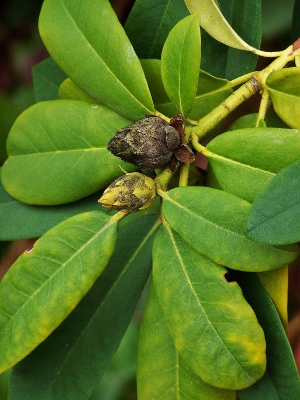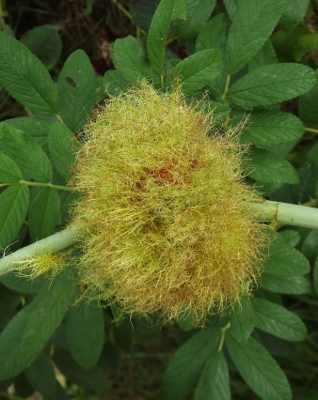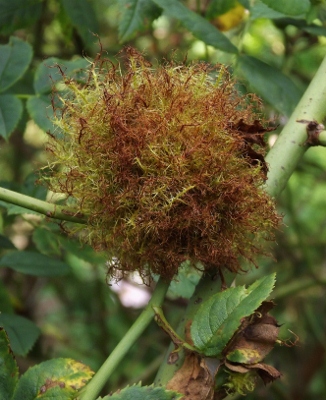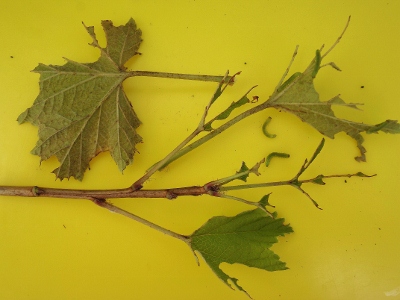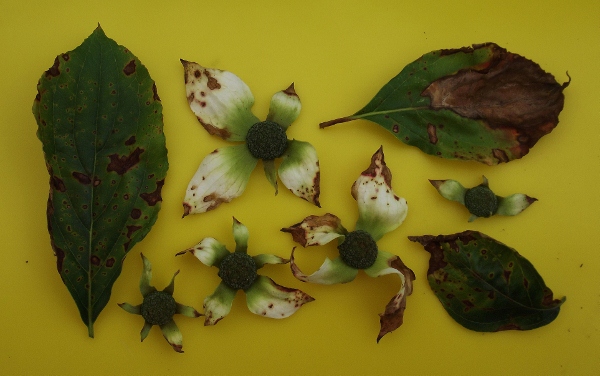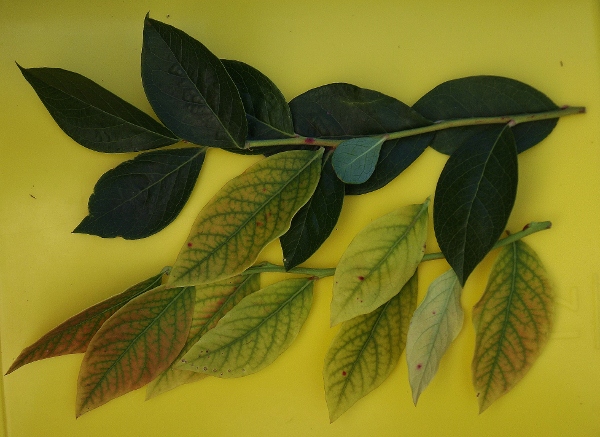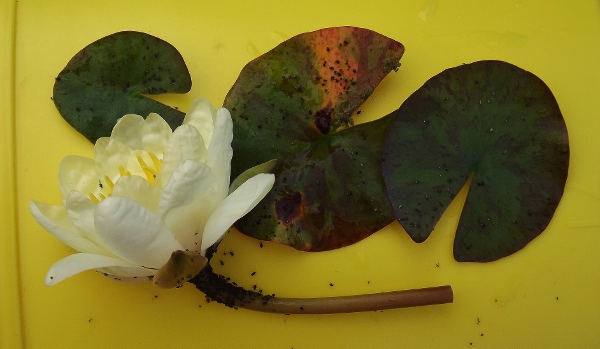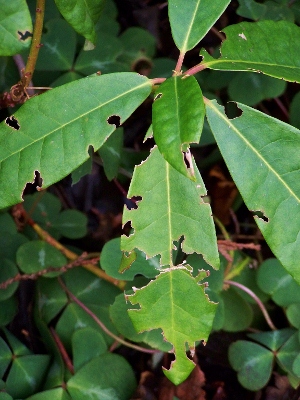 Pest and Life Cycle (Otiorhynchus sulcatus) Black Vine Weevils are nocturnal snout-nosed beetles (greyish-brown to black). The adults emerge from the soil in early June and feed on plant foliage. After about a month they begin to lay eggs in the soil, usually near the base of the affected plants. The larvae that hatch feed on roots and the bark of stems at ground level. These overwinter underground, pupate in May and emerge from the ground as adults. Adults will also occasionally overwinter in the root system or above ground in leaf litter.
Pest and Life Cycle (Otiorhynchus sulcatus) Black Vine Weevils are nocturnal snout-nosed beetles (greyish-brown to black). The adults emerge from the soil in early June and feed on plant foliage. After about a month they begin to lay eggs in the soil, usually near the base of the affected plants. The larvae that hatch feed on roots and the bark of stems at ground level. These overwinter underground, pupate in May and emerge from the ground as adults. Adults will also occasionally overwinter in the root system or above ground in leaf litter.
Symptoms – Small notches begin to appear on the foliage margins with leaves becoming lacy with severe infestations. Ground-borne 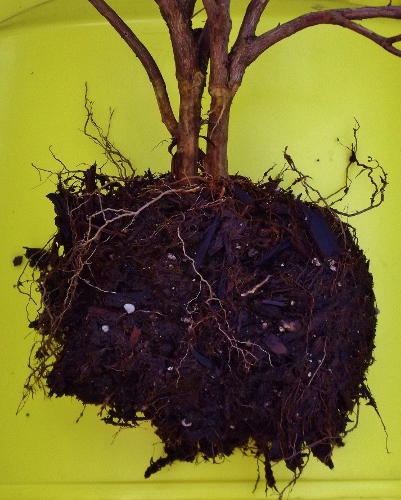 larvae feed on roots and bark (near soil level), often girdling the stem and killing the plant outright. Vine Weevils also attack Azalea, Viburnum, Yew (Taxus), Kalmia and Salal (Gaultheria shallon).
larvae feed on roots and bark (near soil level), often girdling the stem and killing the plant outright. Vine Weevils also attack Azalea, Viburnum, Yew (Taxus), Kalmia and Salal (Gaultheria shallon).
Management – As soon as leaf damage occurs (usually in early June) spray affected foliage with a Pyrethrin-based pesticide and repeat with signs of fresh injury. This spray acts as a deterrent leaving a residual botanical poison on the leaf surface. If the Rhododendron is free-standing (not touching another plant, walls or fences) you can use a sticky paste band (Tanglefoot) on the main stems to trap the night-feeding adults.
Prevention – 1. Use a soil drench that includes parasitic nematodes around plants in May (as soon as the soil warms) and again in late August – being sure that the area has been well watered prior to application. 2. Lay traps of rolled corrugated cardboard (held with rubber bands) near the base of affected plants. Adults will lodge in these during the day, at which time you can simply tap them out into a bucket of soapy water. 3. Plant weevil-resistant Rhododendron cultivars which have rolled-under edges that are difficult for them to feed on. Some of these include ‘Point Defiance’, ‘Virginia Richards’, ‘Jock’, ‘Dora Amateis’, ‘Crest’, ‘Odee Wright’, ‘Moonstone’ and ‘Graf Zeppelin’.
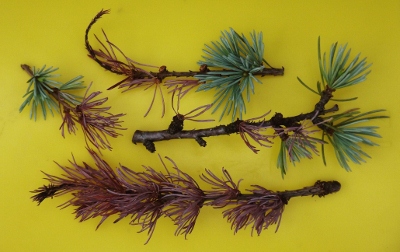 Pest and Life Cycle – (Sirococcus conigenus / Kabatina sp.) Tip blight is a fungus that affects both Atlas (Cedrus atlantica) and Deodar Cedar (Cedrus deodara), with the Sirococcus being the most common. It has a one year life cycle with the fungus overwintering in dead shoots and infecting the base of new
Pest and Life Cycle – (Sirococcus conigenus / Kabatina sp.) Tip blight is a fungus that affects both Atlas (Cedrus atlantica) and Deodar Cedar (Cedrus deodara), with the Sirococcus being the most common. It has a one year life cycle with the fungus overwintering in dead shoots and infecting the base of new needles from spring to summer – especially during periods of prolonged rain with temperatures between 60-70F. Atlas Cedar is a North African species and is accustomed to a drier climate.
needles from spring to summer – especially during periods of prolonged rain with temperatures between 60-70F. Atlas Cedar is a North African species and is accustomed to a drier climate.
